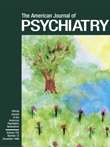Comments on the APA Panic Disorder Guideline
To the Editor: In the excellent and well-documented “Practice Guideline for the Treatment of Patients With Panic Disorder,” it is stated on pages 3, 10, and 21 that studies comparing the efficacy of combined antipanic medication and cognitive behavioral therapy with the efficacy of either modality alone have produced conflicting results. In the case of conflicting results of randomized controlled trials, meta-analysis can be used to clarify the findings.
Recently, we published a meta-analysis that included 106 short-term outcome studies of 5,011 patients with panic disorder with or without agoraphobia (1). In this meta-analysis, the efficacy of psychopharmacological, cognitive behavioral, and combination treatments was compared. According to this study, for agoraphobic avoidance, the combination of antidepressants with exposure in vivo was significantly more effective (mean Cohen’s d=2.47, SD=0.82) than all other treatments evaluated (high-potency benzodiazepines: mean d=1.00, SD=0.59; antidepressants: mean d=1.02, SD=0.44; psychological panic management: mean d=0.91, SD=0.54; exposure in vivo: mean d=1.38, SD=0.84; the combination of psychological panic management with exposure in vivo: mean d=1.22, SD=0.60). With regard to panic, exposure in vivo alone was not effective. When the various treatment conditions were compared, no differences concerning panic attacks were found.
From a second meta-analysis of 68 follow-up studies of 1,346 patients with panic disorder with or without agoraphobia (2), it was concluded that overall, short-term treatment gains were maintained during the follow-up period (mean duration=62 weeks, SD=89 weeks). Again, the combination of antidepressants and exposure in vivo was associated with the largest effect size for agoraphobic avoidance (mean Cohen’s d=3.60, SD=0.74). At follow-up, the combination condition was significantly superior to most other treatment options.
On the basis of these data, it could be argued that use of the combination of antidepressants and exposure in vivo can be recommended more broadly, rather than just for patients with severe agoraphobia or an incomplete response.
1. van Balkom AJLM, Bakker A, Spinhoven PH, Blaauw BMJW, Smeenk S, Ruesink B: A meta-analysis of the treatment of panic disorder with or without agoraphobia: a comparison of psychopharmacological, cognitive-behavioral, and combination treatments. J Nerv Ment Dis 1997; 185:510–516Crossref, Medline, Google Scholar
2. Bakker A, van Balkom AJLM, Spinhoven PH, Blaauw BMJW, van Dyck R: Follow-up on the treatment of panic disorder with or without agoraphobia: a quantitative review. J Nerv Ment Dis (in press)Google Scholar



